The DMZ on the cheap
I was in Seoul; how couldn't I go to the DMZ? The best way to see it would be to take one of the tours offered by the USO, as these include narration by knowledgeable service members, visits to the Joint Security Area (JSA) of Panmunjom, the third infiltration tunnel, Dora observatory, and Dorasan train station. Unfortunately, this tour costs almost $100 and needs to be booked 5 days in advance. There are other tours that may be cheaper, but all of them that include the JSA (where you're right at the border and in the meeting rooms that straddle the border, face to face with North Korean and South Korean soldiers) are quite expensive and require advance booking for security reasons.I decided to do the tour on the cheap, as I had read that you could do most of the tour on your own by taking the train to Dorasan station and then booking a tour offered by a Korean veterans' association next to the tracks. These tours include the third infiltration tunnel and Dora observatory, but not the JSA (and hence no pre-booking is required). The bus tour to these places costs less than 10% of the cost of tours including the JSA, as it was less than $10 (plus the cost of getting to Dorasan station). Details on this kind of DIY tour can be seen here and here: it looks like improvements have been made so you can take the train to Dorasan direct from Seoul station, as well as book your DMZ tour from on-board the train to Dorasan. It also sounds like the quality of the bus tour has been improved, which is for the best.
When I went to Dorasan and the DMZ, you had to transfer at Imjingang station (and show your passport) for a Dorasan-bound train. Actually, it involved two transfers, since you would take the subway to Munsan station, transfer to the train to Imjingang, and then transfer again to Dorasan. The new DMZ trains running from Seoul station (but also stopping at Munsan and Imjingang) look more convenient, if more expensive than the train I took. I'm not certain how often trains to Dorasan run now, as the DMZ train runs only once per day now, and if they have eliminated the other trains that do the limited run from Dorasan to Imjingang then the options are even worse now.
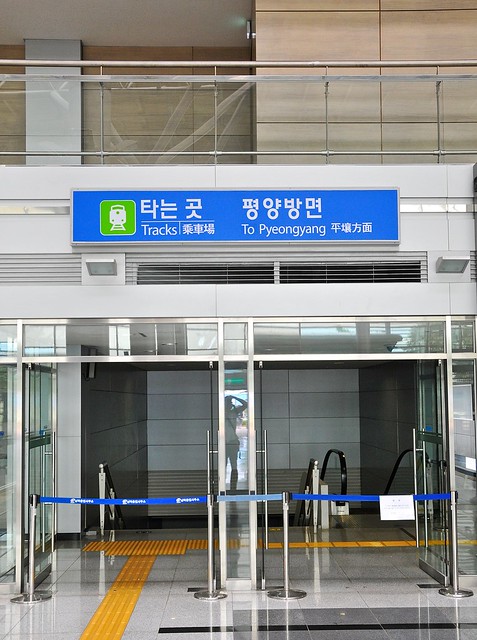 |
| For some reason the gate to Pyongyang was closed. |
I bought my tour ticket after arriving at Dorasan Station. You have two options: 8,700 won for the base ticket, and 11,700 won if you want to take the short funicular train down/up the the third tunnel. Unless you're really out of shape, you don't need to spend extra.
The tour, given that it was publicly or quasi-publicly
run, was really disappointing, and seemed similar to the scammy shopping
tours that unscrupulous tour organizers run elsewhere (such as the
super-cheap tours to the Great Wall at Badaling in Beijing). Again, this seems to have been improved since I did it, however.
As soon as the dozen of us were picked up from Dorasan, we were driven
to a small souvenir market and restaurant, where we were left for over
an hour. No English was spoken by the driver and there was no guide or
audio narration of any sort—I had no idea of how long any of our stops
were. When the bus returned, we drove at breakneck pace to the third
tunnel, where we were again unceremoniously dropped off.
The
third tunnel is really interesting, especially if you are able to attach
yourself to a USO tour like I did. The narration from the military
members who give the tours is really good. Unfortunately, you aren't
allowed to take pictures, but it's pretty interesting to hear how they
detected tunneling.
We then slalomed through the traffic barriers on the
roads around the DMZ on our way to Dorasan Observatory, where we spent
about 15 or 20 minutes. When he had
decided we had seen enough, the driver came to shepherd us back to the
bus.
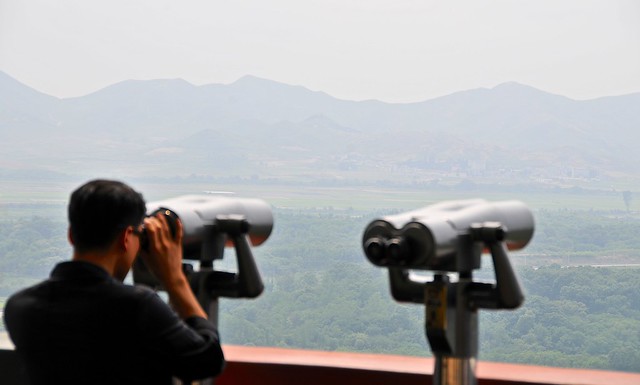 |
Dora Observatory. You technically
aren't allowed to take pictures beyond a yellow line that is about 5
meters from the railing, but some people with cellphones or compact
cameras did, anyway.
|
The DMZ is like a giant wildlife refuge: no one is allowed in, there is no human development or agriculture, and the area has been left to the forces of nature for the past 60 years.
Getting back on the bus, we again zoomed off, this time back to Dorasan Station. I had assumed that we had to hurry everywhere because of the time we spent at the restaurant and souvenir market meant that we would miss the return train unless we hurried, but we actually arrived back at the station about half an hour before the train left.
 |
The front of Dorasan Station.
|
Even accounting for the kickbacks they get from the souvenir market and restaurant, the pace of the tour didn't make a lot of sense. Although it sucked a lot more than it should have, it was still worth the low price (and for me the JSA isn't worth the extra price), and is likely a much better experience today.
Seonyudo Park
Seonyudo Park is on an island in the Hangang River, which runs through Seoul. It used to be a water treatment plant, but the spaces have been re-purposed into gardens, parkland, and exhibition spaces. It's a nice place to spend an evening—I headed there after my return from the DMZ—although I believe it gets quite busy on the weekends.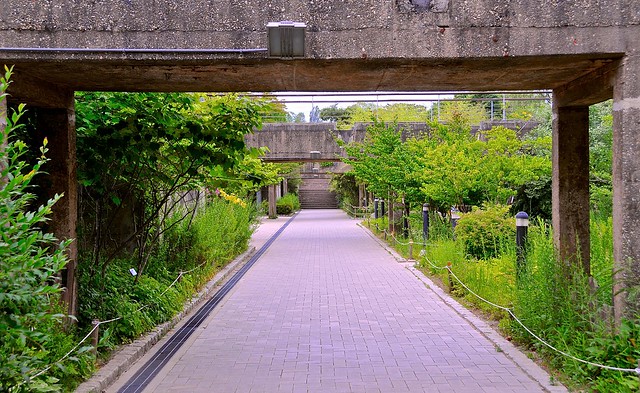 |
Much of the industrial infrastructure remains. This settling tank has been turned into a sunken garden.
|
 |
Ivy covers half-demolished concrete poles. The arrangement reminds me of the Garden of Exile in Daniel Libeskind's Jewish Museum in Berlin.
|
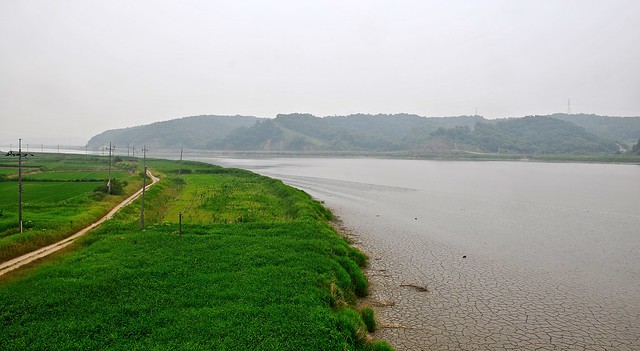
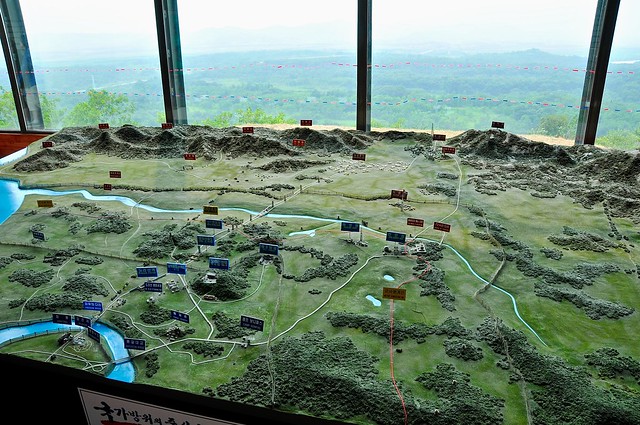


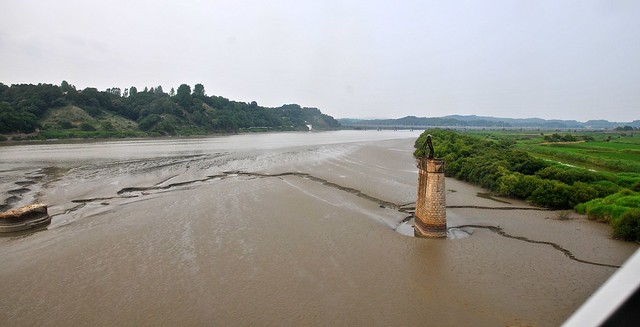

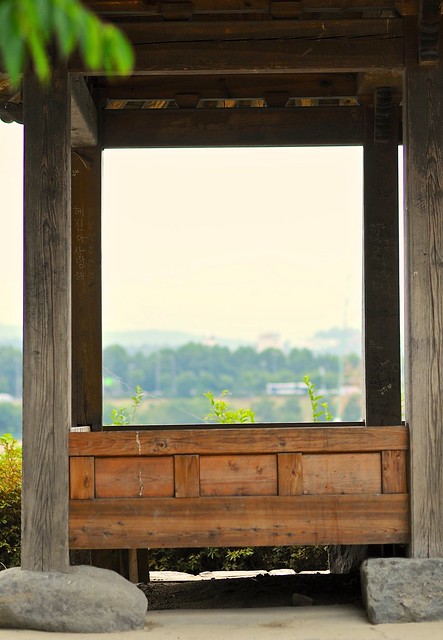

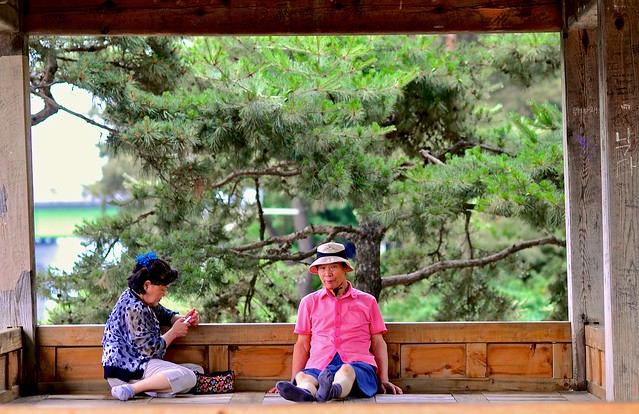
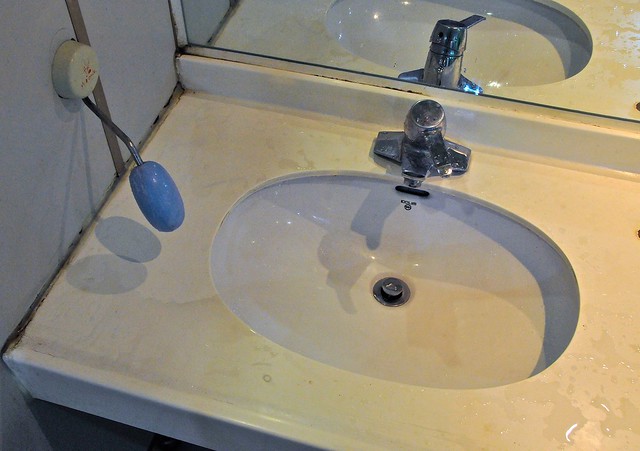
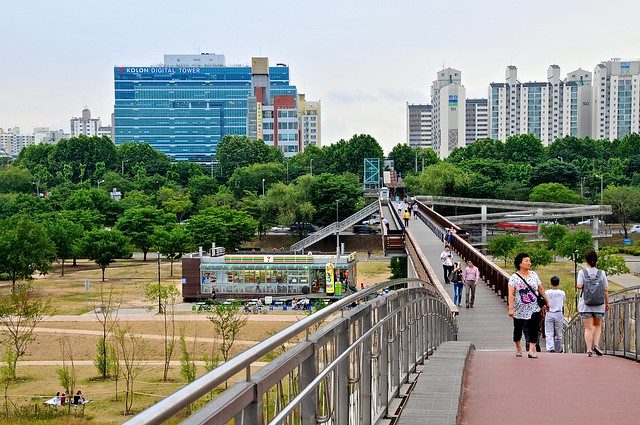
I like it.
ReplyDeleteThanks for sharing.